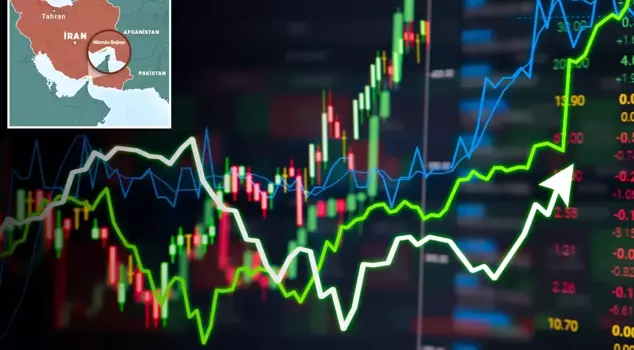
23.06.2025 08:32
Following the U.S. striking three nuclear facilities with Tomahawk missiles, the Iranian parliament approved the closure of the Strait of Hormuz. The risk of closing the Strait of Hormuz caused a shock in the markets. The price of Brent crude oil tested $80.34 per barrel in the first trades of the week. Subsequently, it appears that the search for a balance around $79 is ongoing.
```html
After the US struck three nuclear facilities in Iran, the approval from the Iranian parliament to close the Strait of Hormuz created a seismic effect in the markets.
TESTED 80.34 DOLLARS
As the new week begins, attention turned to oil prices following the US attack on Iran's nuclear facilities over the weekend. The price of Brent crude oil, which closed at $77.17 on Friday, tested $80.34 in early trading today. Subsequently, as of 04:00 GMT, it appears that the search for equilibrium around $79 is continuing. The daily increase in oil was around 2.5% in early trading, while Brent prices saw $80 for the first time since January 21. Thus, Brent tested its highest level in the last 5 months.
FEAR OF HORMUZ IN THE MARKETS
The uncertainties regarding how Iran will respond to US attacks keep tensions high in the oil market. Iran is both a major oil producer and controls the Strait of Hormuz, through which 20% of the world's oil passes. The biggest concern stems from the risk of closing the Strait of Hormuz.
IRAN PARLIAMENT APPROVED
It is reported that the Iranian parliament has approved closing Hormuz in response to US attacks. However, the final decision must be made by Iran's Supreme National Security Council. No such decision has been made yet.
CRITICAL WARNING FROM GOLDMAN
On the other hand, US-based Goldman Sachs warned that if Hormuz remains closed for an extended period, oil prices could rise above $100 per barrel.
The bank stated, "If the oil passing through the Strait of Hormuz declines by 50% for a month and then remains 10% lower for 11 months, we predict Brent will rise to $110."
Additionally, Goldman shared the estimate that even a daily drop of 1.75 million barrels in Iran's supply could push Brent oil to $90.
ABOUT THE STRAIT OF HORMUZ
The Strait of Hormuz, a narrow waterway at the mouth of the Persian Gulf, connects Middle Eastern oil and LNG production to global markets via the Oman Sea and the Indian Ocean.
This strategic passage, which hosts about one-third of the world's seaborne crude oil, plays a critical role in the shipment of crude oil and condensate from Middle Eastern producers, primarily Saudi Arabia and the United Arab Emirates.
Approximately 20 million barrels of oil and oil products pass through the Strait of Hormuz daily, with a significant portion reaching Asian markets, especially China. Additionally, 20% of global LNG trade also passes through this strait.
```